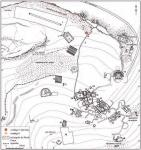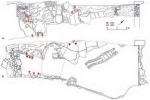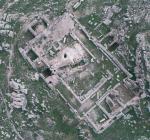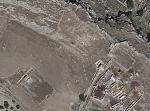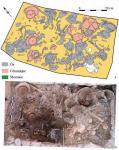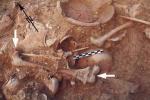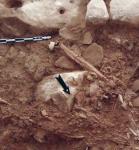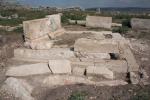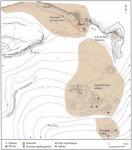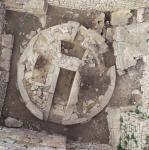Summary (English)
These are the results of an excavation an a study of the northern periphery of Dougga in the frame of a convention and scientific cooperation between The Nation Institute of Heritage, Tunis (INP), Research Scientific Center, France (CNRS, AOrOc, UMR 8546) led by Samir Aounallah (research director) and Véronique Broquier-Reddé from their mutual institutions. It handled the following research axes:
-Architecture and funeral pre-Roman practices in the necropolis north-west of Dougga
-A firs preview of pre-roman ceramic
-The Roman funeral set
-The sacred area of Baal Hammon-SaturnSince 2017, the Tunisian-French team has been examining the northern periphery of Dougga (Thugga) and in particular the megalithic and Roman north-western funerary area on the cliff top and the sanctuary of Baal Hammon – Saturn, at a lower level to the north-east. Several discrete aspects are presented. The architecture of a newly identified turriform mausoleum and one of the circular drum tombs (bazinas) testify to a high Hellenistic cultural level of the society and the Numidian craftsmen. The material recovered from the bazina’s chambers provides a wealth of new data on the culture associated with these structures and on collective burial practices involving children and adults. A typology is presented of the pre-Roman ceramics of the entire necropolis, dated between the late 4th century BC and the 1st century BC, as well as results of petrographic analysis. The funerary area continued to be used until the second or third quarter of the 3rd century AD, and the examination of a set of inscribed stelae, mensae and cremations in pots permits, for the first time at Dougga, comparison of anthropological data with epitaphs. Finally, the multidisciplinary study of some votive stelae and cinerary vessels discovered in situ in the sacred area of Baal Hammon – Saturn is also a first for this site and it challenges ancient identifications and confirms perinatal human cremations, along with ovicaprine and food offerings until AD 80.
- Samir AOUNALLAH
- Véronique Broquier-Reddé
Director
Team
- Hamden BEN ROMDHANE
- Michel Bonifay
- Tomoo Mukai- CNRS, Aix-en-Provence, France
- Véronique Zech-Matterne - CNRS
- Yamen Sghaïer
- Ali Chérif
- Frédéric Poupon
- Jérémy Artru
- Yvan Maligorne
- Haythem Abidi
- Olfa Dammak-Latrach
- Sonia Hafiane-Nouri
- Fatma HADDAD
- Fatma Touj
- Hanène Ben Slimane
- Solenn de Larminat
Research Body
- CNRS-ENS-PSL, AOrOc, UMR 8546, Paris
- Institut National du Patrimoine





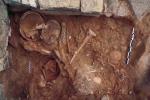
![Download [PDF]](/excavation/skins/fasti/images/results/download_sml.png)
